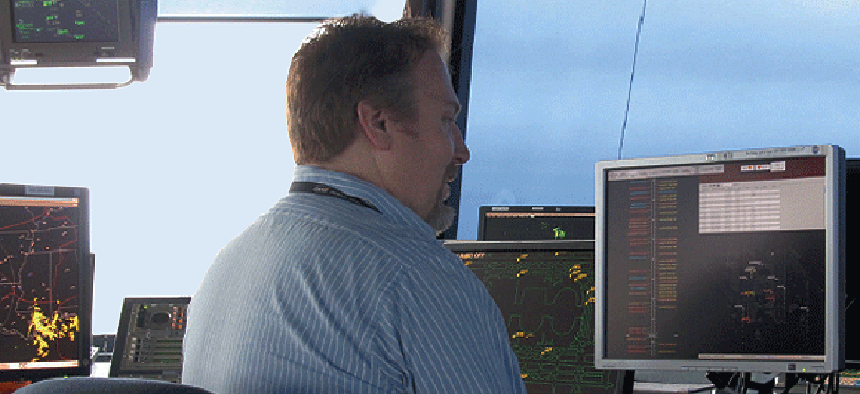NASA builds FAA software to reduce flight delays

The agency's prototype software automates the process of managing ground traffic, letting air traffic controllers set takeoff times that are accurate to within seconds.
An air traffic controller’s job is usually thought of as tracking and directing planes in the air — and with good reason, since keeping the skies safe is the name of the game.
But a significant part of the job includes managing traffic on the ground and scheduling takeoffs. It’s a fairly complex process that involves accounting for a variety of factors on the ground and in the air and then estimating a departure-time window. And as anybody who travels by air can tell you, it doesn’t always go smoothly.
NASA is helping with that, developing a software program that can reduce delays by automating part of the process of calculating how long it would take a plane to get from a terminal gate to a certain spot in the sky. The space agency presented a prototype of the software, called Precision Departure Release Capability (PDRC) to the Federal Aviation Administration on Aug. 6, NASA said in a release.
PDRC would complement tools FAA already has for managing traffic on the ground and scheduling takeoffs, helping controllers more quickly take into account the factors that can affect the timing of a takeoff, such as incoming and outgoing traffic, available flight slots, changes in weather or mechanical problems.
Along with accounting for factors on the ground, a controller scheduling a takeoff also must plan to merge the aircraft into the flow of traffic in the skies, arriving at that point at the right time. Using the current system, controllers identify an open slot and schedule a three-minute window for departure, NASA says in a fact sheet on its software. By automating the process, PDRC can instead send a pilot a precise takeoff time that is accurate to within seconds.
The difference between three minutes and several seconds might not sound like much, but during peak traffic times it can add up quickly, leading to longer delays and what John Cavolowsky, director of NASA's Airspace Systems Program, called “missed opportunities” — takeoff paths, or slots, that can go empty because of delays on the ground.
Tests at NASA’s North Texas Research Station near the Dallas/Fort Worth airport found that PDRC could fill up to 80 percent of those unused slots, increasing overall efficiency at airports and reducing the workload on air traffic controllers, who have a notoriously stressful job.
NASA's Airspace Systems Program developed the software in collaboration with FAA, and the tests in Texas involved FAA controllers managing actual flights out of Dallas/Fort Worth, NASA said.
The agencies have pooled resources before on air traffic control. Back in 1998, NASA developed two software tools for FAA, the Traffic Management Adviser and the Final Approach Spacing Tool.
More recently, the agencies worked together to develop the Efficient Descent Advisor to help controllers manage incoming air traffic more efficiently.
NEXT STORY: Data analytics goes hunting and fishing in Texas





